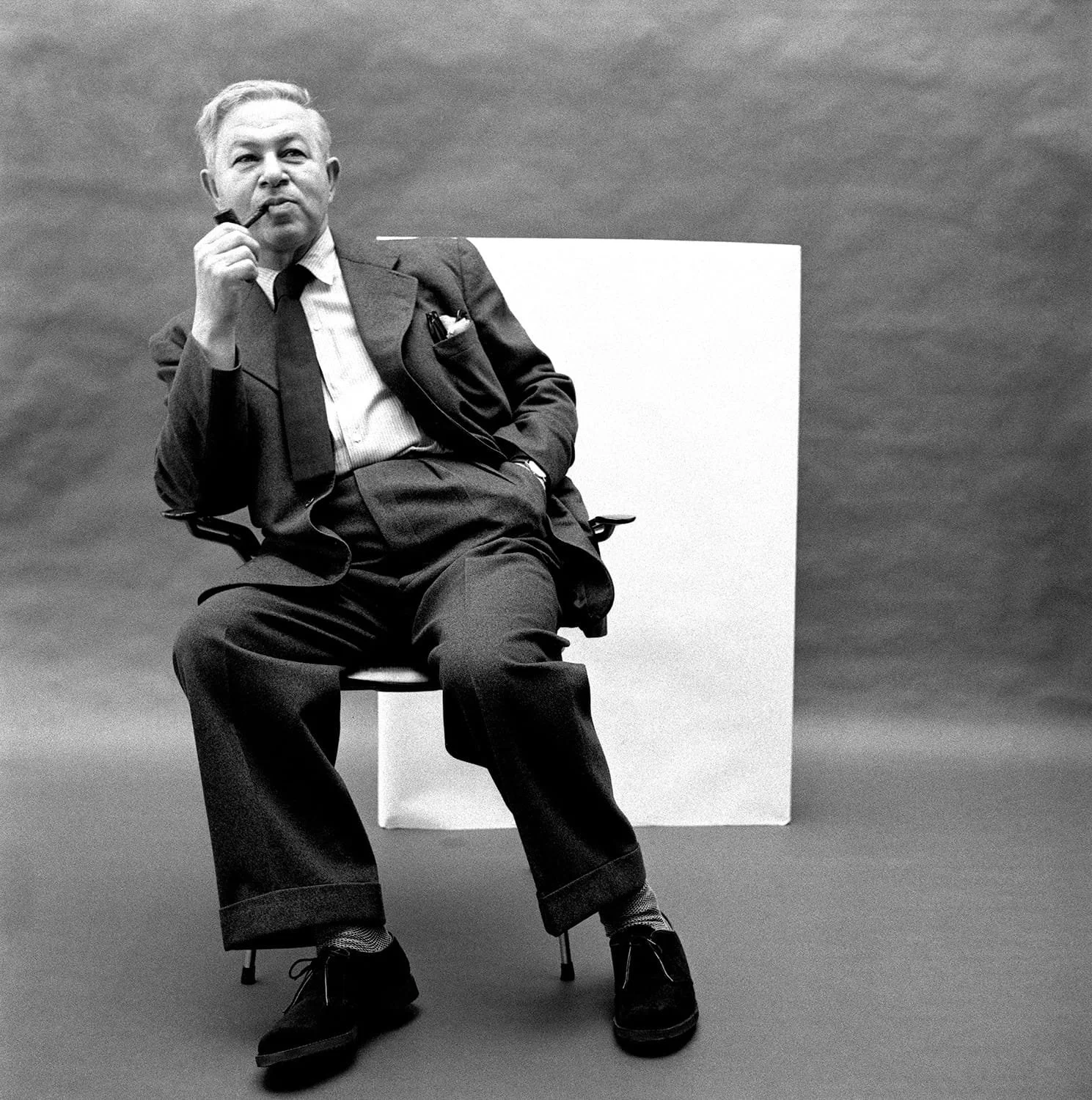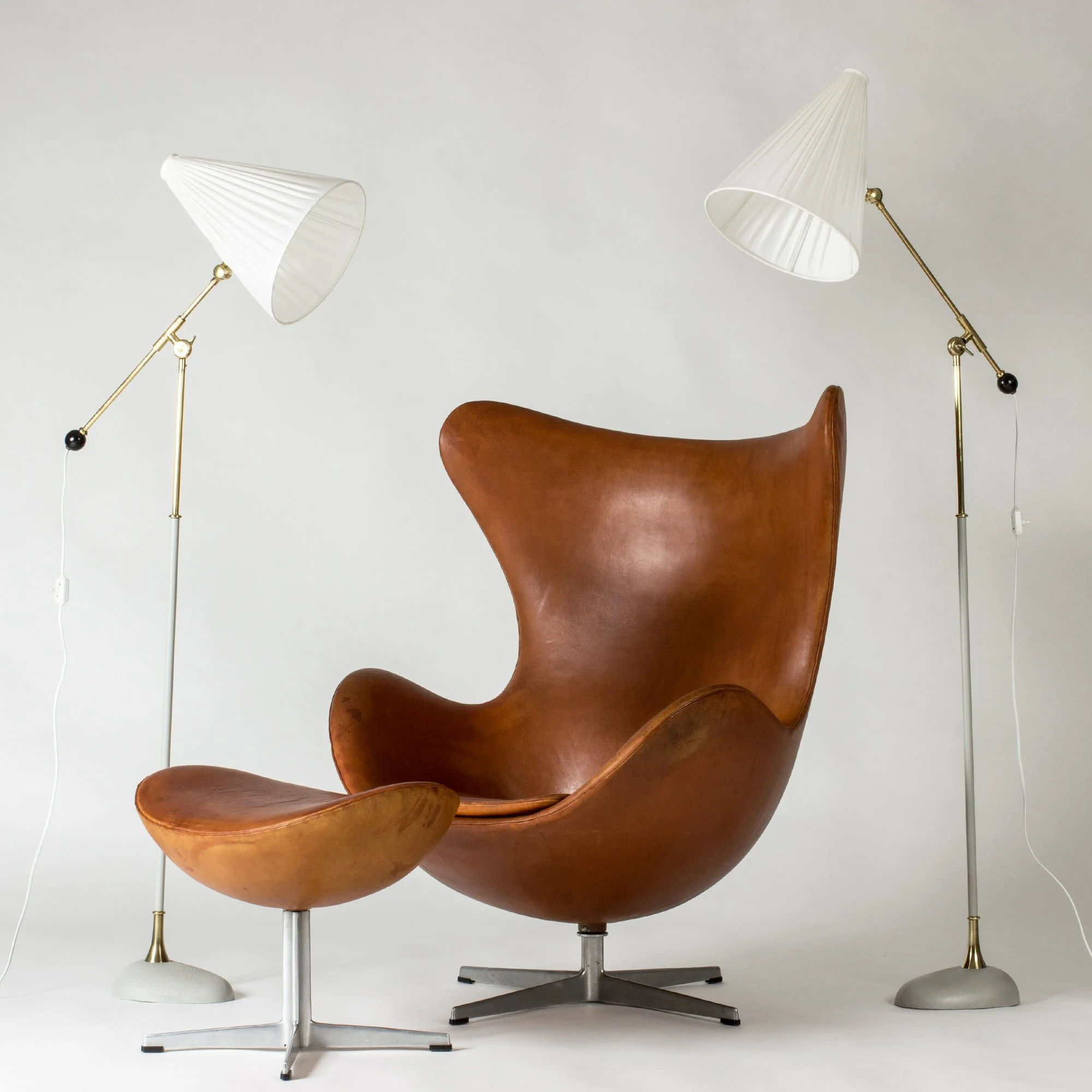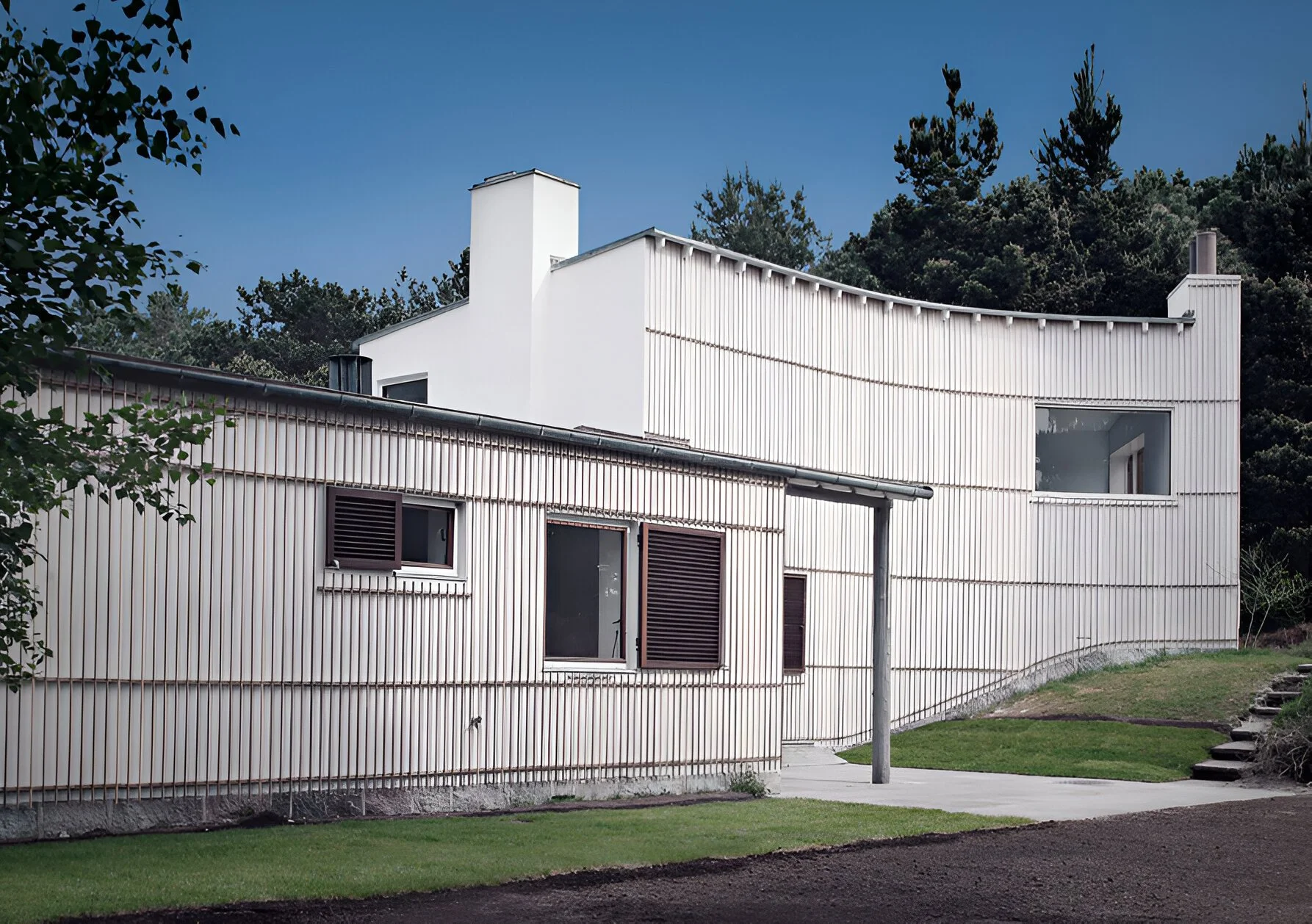Arne Jacobsen: Master of Architecture, Design and Integration
Few designers have left such a complete and enduring mark on modern living as Arne Jacobsen. Trained as an architect, he designed not just buildings but every element within them. From door handles to chairs, lamps to cutlery, his vision of total design shaped the way we think about form and function in everyday life.
Born in Copenhagen in 1902, Jacobsen first studied masonry before graduating from the Royal Danish Academy of Fine Arts in 1927. His early influences included functionalism and the Bauhaus, movements that sought beauty in simplicity and purpose. His work would soon define Scandinavian modernism, combining clarity, balance and quiet elegance.
Throughout his career, Jacobsen believed that design should form a coherent whole. Nowhere is this clearer than in the SAS Royal Hotel in Copenhagen, completed in 1960. He designed the architecture, interiors, furniture, lighting and even the cutlery, creating a seamless world of precise proportions and calm geometry. The Egg and Swan chairs, first created for that project, have since become icons of twentieth-century design.
'Egg' Lounge Chair and Footstool | © Nordlings
'Ant' chairs from Fritz Hansen, 1950's/60's | © Bukowskis
Jacobsen’s civic projects, from town halls to schools and university buildings, share the same disciplined harmony. Whether shaping a large public space or a small household object, his approach never changed: every curve had reason, every detail a role.
In the mid-1960s, Jacobsen brought this philosophy to the domestic scale through his collaboration with Stelton. The resulting Cylinda Line coffee and tea service transformed polished stainless steel into pure architecture. Cylindrical forms, balanced handles and flawless proportions made the set a timeless study in restraint. It remains one of the clearest expressions of his belief that good design is both functional and poetic.
At Claroscuro, our Arne Jacobsen coffee set continues that spirit. Complete with its original packaging, documentation and labels, it embodies the precision and refinement that defined Jacobsen’s work. Never used and beautifully preserved, it offers a rare glimpse into the designer’s enduring pursuit of perfection — proof that even the simplest daily ritual can carry the quiet authority of great design.
Arne Jacobsen’s Summerhouse | © Kira Ursem



